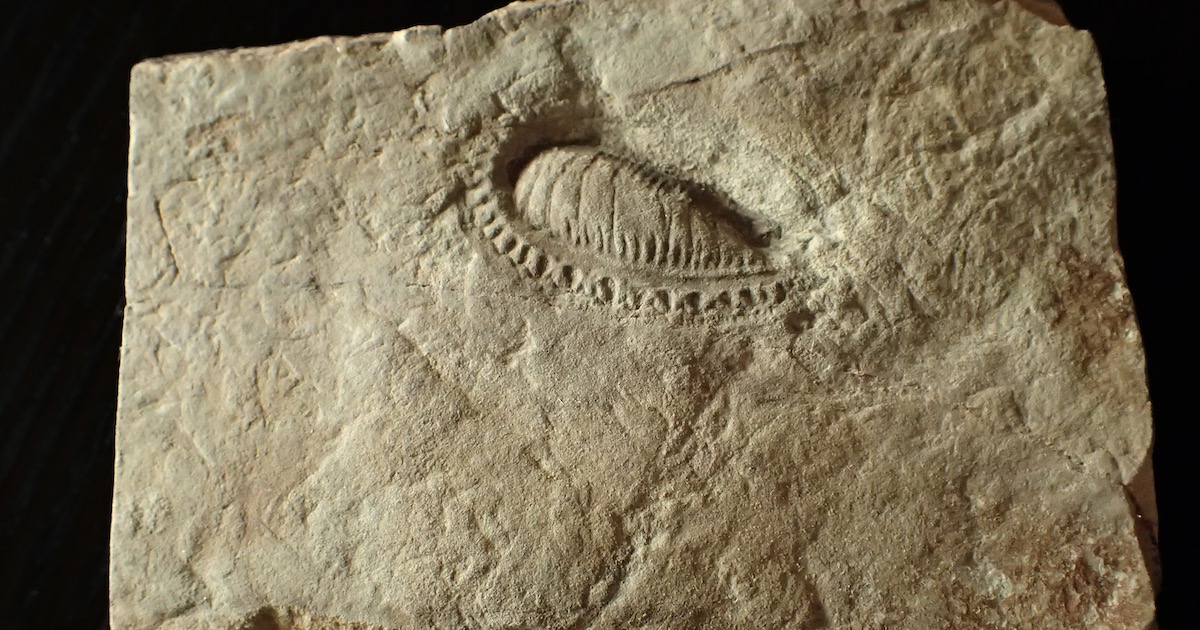 Evolution
Evolution
 Paleontology
Paleontology
Kimberella — Conflicting Evidence from Taphonomy

Editor’s note: We are delighted to present a series of posts by paleontologist Günter Bechly on the Ediacaran organism Kimberella. If identified as an animal, it would “predate the Cambrian explosion of bilaterian animal phyla as a kind of ‘advance guard.’” The question is of interest for debates about evolution and arguments about intelligent design raised by Stephen Meyer, among others. Find the full series about Kimberella here.
Kimberella fossils have only been recorded from stratigraphic layers with wave-rippled storm sands that must have been deposited in tidally influenced but shallow marine habitats beneath oxygenated bottom waters (Fedonkin et al. 2017b, Gehling et al. 2014, Bowyer et al. 2017). This was considered evidence for a relatively high physiological oxygen demand, suggesting motility (Sperling et al. 2015).
Ediacaran Death-Masks
The fossilization of Kimberella specimens was most likely based on rapid burial with sand during storm events (Fedonkin et al. 2017b). This produced the typical Ediacaran death-masks (Gehling 1999), which are composite external molds of the ventral and dorsal surfaces, both in various stages of decomposition (Dzik 2003), often with overprinting of superimposed structures. Because the fossils are negative hyporeliefs, they are usually studied based on positive latex casts, which are coated with ammonium chloride for better contrast in photographic documentation (Fedonkin et al. 2007b).
Seilacher (1999: fig. 7) presented evidence from taphonomic experiments with decaying recent soft-limpets (Polyplacophora) buried in sand, which left similar impressions to the Kimberella fossils. This could be seen as lending independent support to the interpretation of the fossils as limpet-like animals.
However, Trusler et al. (2007) emphasized the need for a “detailed analysis of the influence of taphonomy” and the “processes that led to the preservation of the organism.” They also cautioned that “historically, the assignation of Kimberella and its traces … to many different phyla serves to highlight the intrinsic and problematic issue of pattern recognition in the analysis of Precambrian soft-bodied fossils.” Budd & Jensen (2017) agreed and remarked that Kimberella “also serves to illustrate the typical problems that are encountered in the interpretation of Ediaraca-type fossils.“ It is important to keep the caveats in mind, when we later see how confidently many authors have presented their sophisticated interpretations of the fossil evidence.
A bivariate analysis (Mitchell et al. 2020) of Kimberella and the Kimberichnus trace fossils showed a statistically significant aggregation of Kimberella but a segregation between Kimberella and the Kimberichnus trace fossils. The authors interpreted this segregation as evidence that “could reflect the Kimberella organisms avoiding patches of the surface that had already been grazed.” However, this segregation could of course also be seen as conflicting evidence for Kimberella as the tracemaker of these feeding traces.
Farewell to the Fossil Record
Kimberella disappeared from the fossil record before the end of the Ediacaran (Xiao & Laflamme 2009, Grazdhankin 2014), as abruptly as it appeared. Budd & Jensen (2017) remarked that this represents “a stratigraphic discontinuity that questions their supposed continuity with Cambrian bilaterians, unless a significant reduction in Ediacara-style preservation is invoked to have occurred well before the base of the Cambrian.” However, the excellent soft-tissue preservation in Cambrian Konservat Lagerstätten such as the Burgess Shale and the Maotianshan Shales of Chengjiang precludes such an artifact hypothesis.
Next, “Controversial Interpretations of the Kimberella Fossils.”
